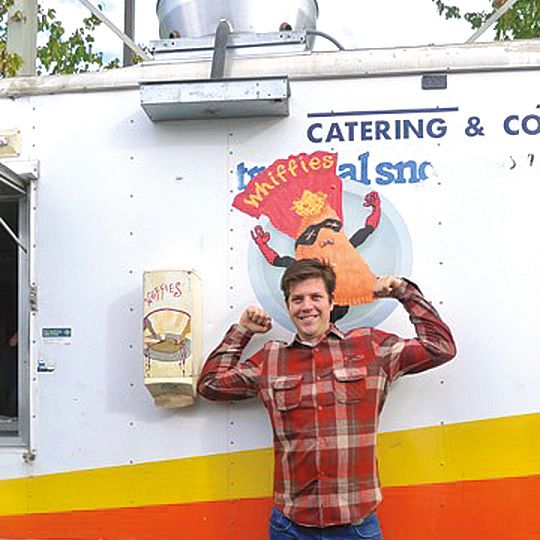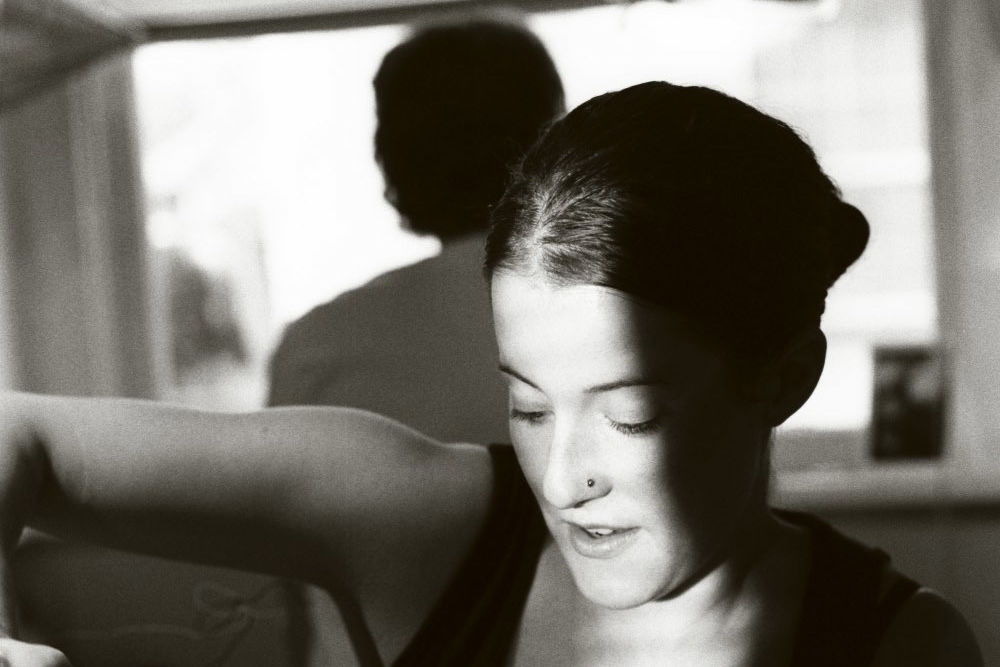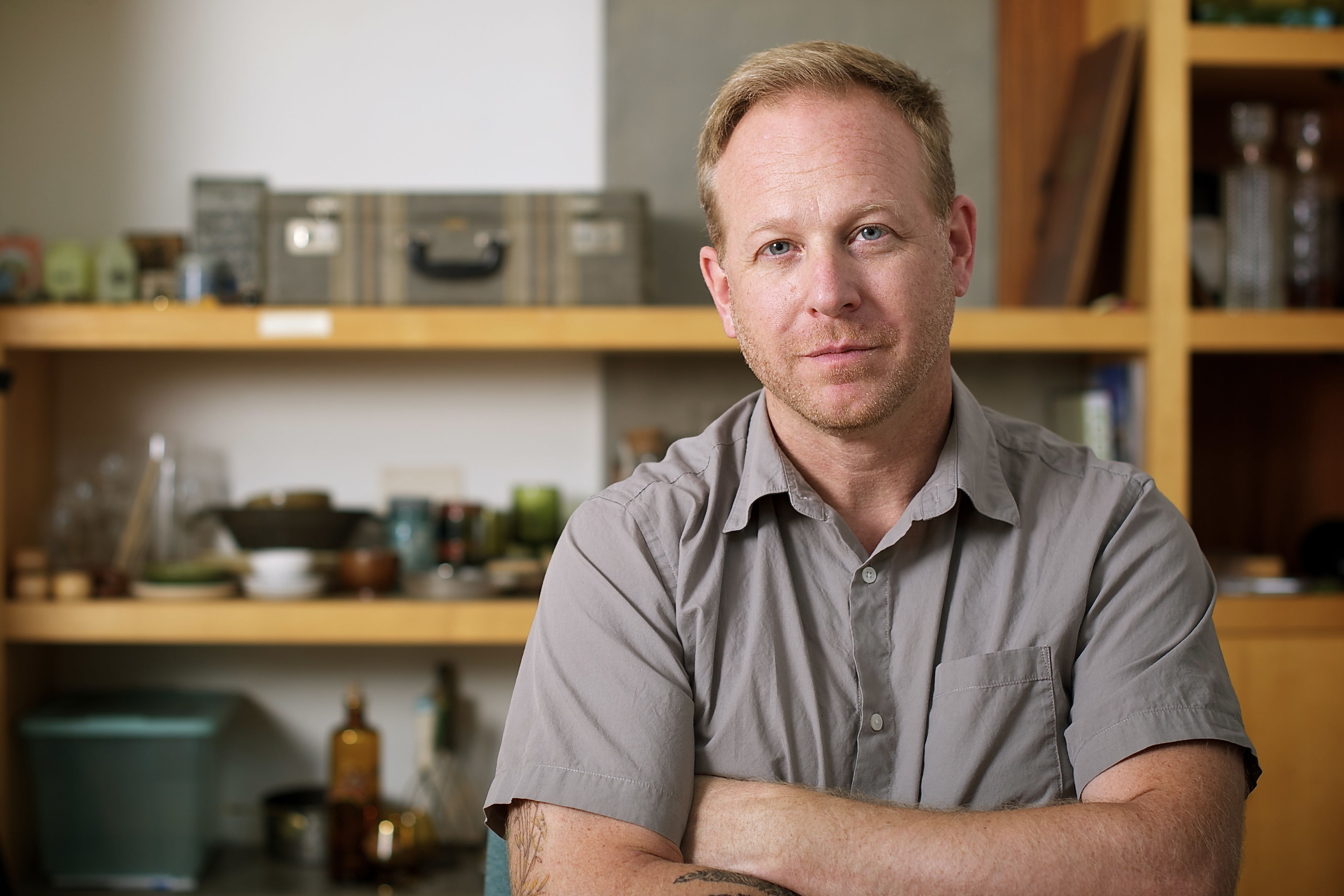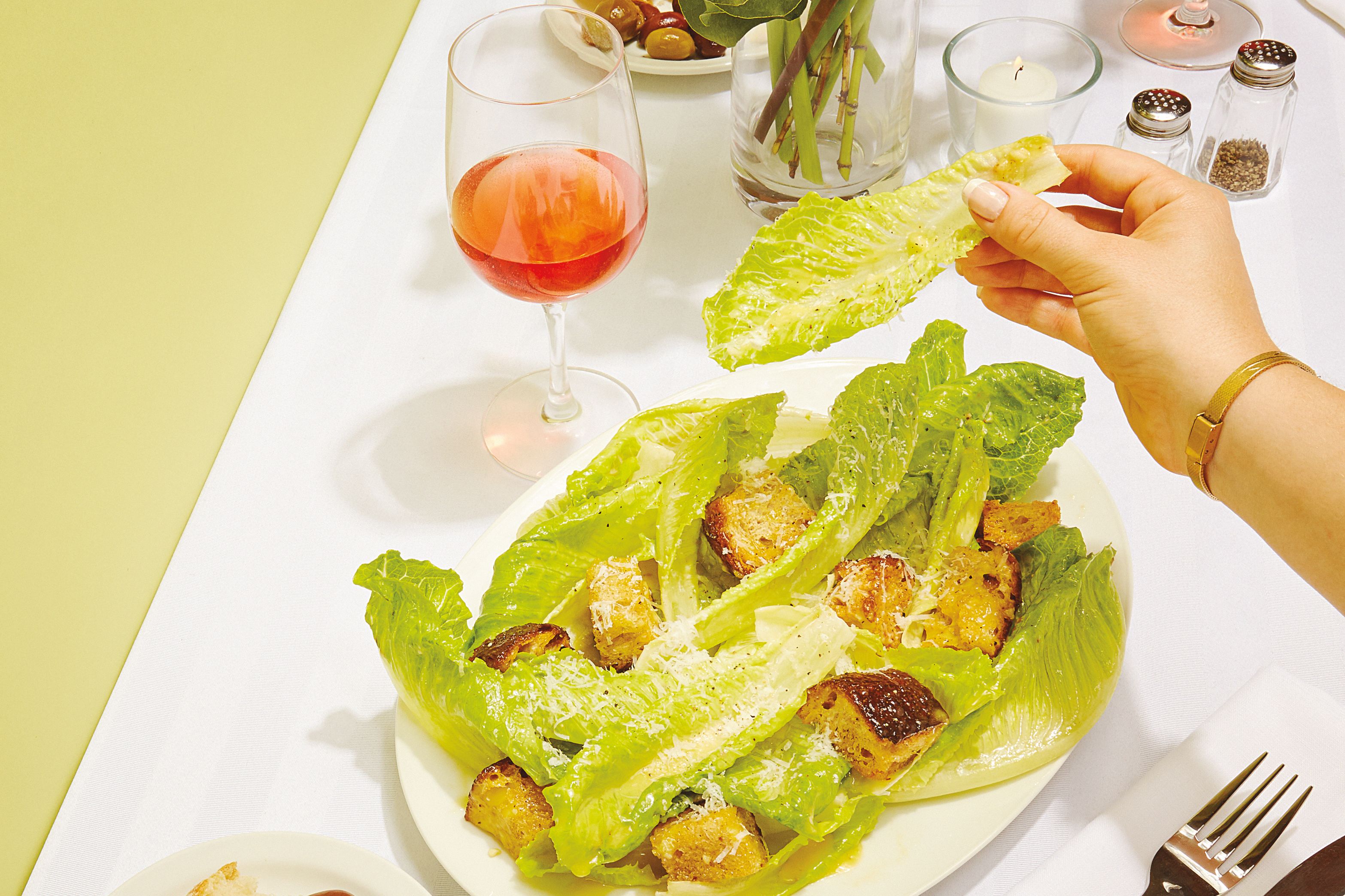
How Zefiro Changed Everything for Portland’s Food Scene
Zefiro, the most mythical of Portland restaurants, landed on the corner of NW 21st and Glisan in 1990 like an undiscovered planet, where diners put on party clothes and ate Caesar salad with their hands. Menus changed every two weeks, each new dish a ticket to someplace fabulous, Tuscany, Morocco, the French countryside, gliding from textbook gnocchi to crisp Algerian chicken. Everything was sexy: the Sade on the sound system, the waiters, the plates, and, suddenly, us. Helping fuel the buzz were pre-fame Pink Martini’s lounge-y midnight dining room sets, complete with a piano-playing Thomas Lauderdale decked out in a Betsey Johnson dress.
It was all inspired by style savant Bruce Carey and chef Christopher Israel’s culinary rambles across Europe and anchored by co-owner Monique Siu’s passionate focus on seasonality. It wasn’t a dream; this is not the ravings of a sentimental fool. Zefiro really was the perfect restaurant. The glamorous, sponge-painted dining room was never a snooty or solely special-occasion spot. During its decade-long run, it was a neighborhood hangout where everyone was coddled like a Hollywood agent; the air filled with art, magic, laughter, and utterly delicious food—a combination you’d kill for today. The trio attracted extraordinary talent who eventually took the art of Zefiro to all corners of the city. Pok Pok’s dialed-in cool (courtesy of former Zefiro line cook Andy Ricker), Siu’s elegantly minimal foodie temple Castagna, and even Portland’s cocktail culture, born and perfected at the restaurant’s copper bar, all owe it a debt. Today, it’s still a badge of honor to have worked (or eaten) at Zefiro. Here’s a taste.
The Birth of Zefiro “When Chris and I made a plan to move to Portland from San Francisco, we decided to tour Europe for two months. With little money, we ended up spending most of our time hanging out in cafés and restaurants. At Cibreo [in Florence], and many other Old World restaurants in Spain, France, and Italy, we inadvertently studied every aspect of what made these places so special. On a long trip like you run out of things to talk about, so together you dissect what you are eating, and the environment you are in. Though we had no intention of opening a restaurant, we conceived of what would become Zefiro. It always felt like we weren’t ‘creating’ as much as we were re-creating what we had experienced before.” —Cofounder Bruce Carey
Life Before Zefiro “When Bruce and I first moved to Portland, I was amazed at the size of portions. Rose’s cinnamon rolls were the size of a small toaster. I remember Couch Street Fish House serving canned peaches … as an appetizer! Jazz de Opus was the hip place. We met Monique when we were catering for [local foodie politico] Ron Paul in Northwest Portland, which was the height of the food scene then; it had a little mini market where you could buy arugula.… With Zefiro, cooking was a means of exploring other countries, a kind of armchair traveling, a global, all-inclusive meal. Bruce always wanted that sexy vibe, a dance beat. Sade was always on the sound system. But we also wanted something that felt ‘Italian.’ We filled the place with Northwest artists and sponge-painted walls. We also supported gay culture. Bruce and I were openly gay. —Chef Christopher Israel
What Is “Sexy”? “Chris told me that his mentor, chef Joyce Goldstein from San Francisco’s Square One, would comment critically, ‘It’s not sexy enough,’ meaning check your seasoning, add more butter, brighten the sauce, or whatever the case may be. We adopted that usage of the word, and eventually the staff came to understand exactly what we meant.” —Cofounder Bruce Carey

ZEFIRO, REMEMBERED (clockwise from top left): The view of the restaurant from NW 21st Avenue; Zefiro's '90s-chic dining room; chef Christopher Israel dressing salad caprese in the kitchen; Zefiro kitchen staff, including future Pok Pok impresario Andy Ricker at left.
How Zefiro Changed Everything “I remember my first night vividly. I was terrified by the elegance and sophistication of the waiters. They had the confidence of Greek gods and perhaps the same imperious edge. In an instant my understanding of the culinary world was transformed. Restaurants to me seemed like a means to an end, a certain rung in hell I had to wade through while waiting for my real life to begin. It was not until I walked through those flawless rooms that I understood that food could contain beauty, it could be a vehicle for an aesthetic life, a meaningful life. Before Zefiro, I wanted to be an architect, not a food person, and those two years forever changed the course of my life." —Former Zefiro busboy Michael Hebb
A New Norm “I was very much inspired by the smaller restaurants I went to in France as a child and when I went to school there between high school and college. What particularly spoke to me about these small, chef-driven places was how the menus were driven by the ingredients that were available that day. While many of the places were very traditional in their recipes, they were extremely seasonal in a way that most American restaurants were not. So I guess I wanted to take that part of the food culture that was so careful and seasonal about its ingredients and leave behind the part that felt mired in tradition. It’s interesting to think about it now that almost every place thinks locally and seasonally—but it wasn’t the norm then.” —Cocreator Monique Siu
The Early Days of Pink Martini “My feeling at the time: there’s a whole crowd of people who would like Pink Martini but would never go to Berbati’s Pan or 1201 or any other club. The dining room was the cultural epicenter of the city, and by playing there at midnight on Saturdays, we reached a whole new audience.” —Thomas Lauderdale, Pink Martini bandleader
Behind the Curtains “Zefiro elevated dining, food, drinks, friendships, fun to a higher experience. A night at Zefiro was a night to look forward to. People don’t realize how HARD they worked to create that party every night. It was theater, really. The music, the candles, the menu, the curtains, the light, the aprons, the plates. It was all studied but at the same time effortless.” —Gordon Thompson, NikeTown designer
The Meaning of “Perfect” “(Our travels to Europe) and my shared work experience with Chris at San Francisco’s Zuni Café created a consensus between us to how a perfect restaurant should be, how the menu should read, how the food should be presented, how it should taste, how the staff would treat customers, how it would look, how it would feel. —Cofounder Bruce Carey
Dispatch from the Kitchen "The drama of working [there] was nonstop, from the rotating glitterati of Portland to the birth of Pink Martini to the constant jockeying for Bruce's quixotic favor. It was competitive, volatile, narcissistic, and sexy as fuck. You felt like you had been plucked and elevated out of the brackish Willamette backwaters and given entrance to a cosmopolitan world that was more NYC than NW Hoyt.” —Michael Hebb
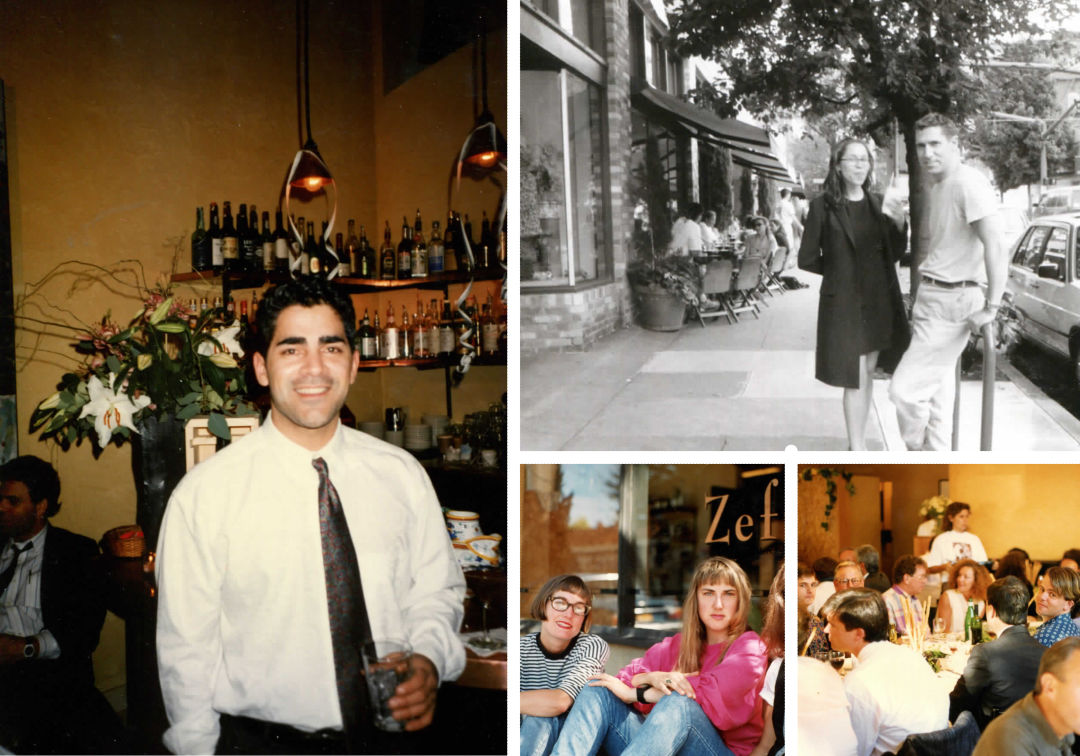
BACK IN THE '90s (clockwise from top left): Zefiro chef Christopher Israel in front of the restaurant's iconic copper-topped bar; Zefiro co-owner Bruce Carey relaxing with Pink Martini lead vocalist China Forbes; regulars in the buttery-toned, sponge-painted dining room and out front of the restaurant.
Kitchen Confidential “After working there for only three months, I popped a disc in my back rock climbing. Instead of replacing me, Chris and Bruce hired somebody from a temp agency to cover me while I had surgery and recuperated. It was like a family there; a slightly crazy and dysfunctional family at times, but aren’t all families like that?” —Pok Pok’s Andy Ricker, former Zefiro line cook
The Menu … Especially Those Ricotta Gnocchi “The menu was heavily Mediterranean at first, then more Southeast Asian influences in 1994, with Asian spring rolls and deep-fried whole fish. Our signature dish was probably the salmon wrapped in grape leaves. The Caesar was influenced by Zuni Café but I grew up eating with my hands. People still remember the ricotta gnocchi. It was a personal thing, you had to get in the zone, had to have a touch.” —Chef Christopher Israel
Why We’ll Always Love Zefiro “My husband and I were regulars. We always sat in the window in the bar or dined with whatever actors Gus [Van Sant] had on hand to entertain. It was a clubhouse of sorts. [It had] the first great bread in Portland, a sourdough boule, much like the famed Poilâne from Paris. I remember the olives sat in a huge jar on the beautiful copper bar. They were so enticing, served up warm, bathed in the delicious olive oil with that crusty bread to sop and slurp. Zefiro. I miss it like a tooth I’ve lost. —Missy Stewart, Gus Van Sant production designer
Descendants No one place today is an equivalent galvanizing force, though the spirit of the food lives on at former line cook Kevin Gibson’s Davenport and standout Coquine.
Still hungry? Check out Zefiro’s game-changing Caesar salad recipe.



